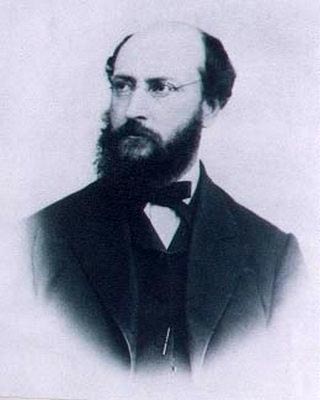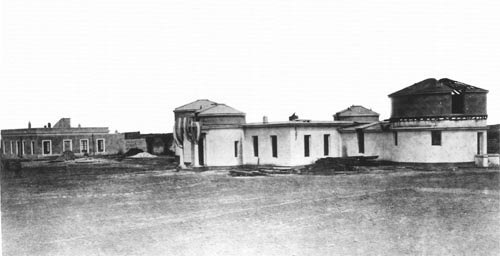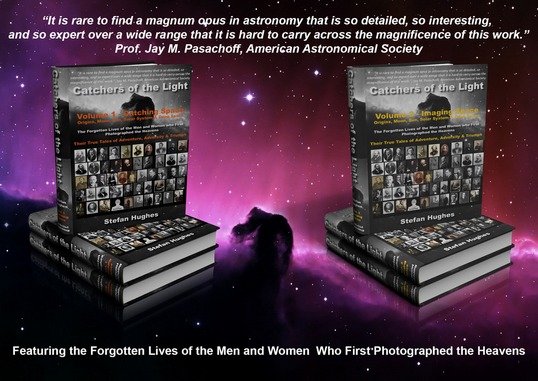'Our Man in Cordoba'

Born: 27th September 1824, Boston, Suffolk, Massachusetts, USA
Died: 26th November 1896 Cambridge, Middlesex, Massachusetts, USA
Benjamin Apthorp Gould was an Astronomer of the ‘old school’ who believed in the importance of measurement and position, preferring it to the then new science of Astrophysics. He along with his mentor Lewis Morris Rutherfurd pioneered the development of Photographic Astrometry. In the years 1872 to 1882, during his time as the first Director of the Observatorio Astronómico de Córdoba, Argentina, Gould and his assistants photographed and measured the brightest stars in many of the most well known Open Clusters in the Southern Hemisphere.
Benjamin Apthorp Gould (1824-1896) was an astronomer who believed in the old ways. He wished to measure the positions of stars and thus continue with the work begun by the great pioneers of stellar cartography; amongst whose ranks is included the likes of Johann Bayer (1572-1625), John Flamsteed (1646-1719) and Nicolas Lacaille (1713-1762). Although he was of the old school Gould did not dwell in the past by using antiquated methods and equipment. He was keen to make use of photography to measure stellar positions and together with his mentor Lewis Morris Rutherfurd, founded the branch of astronomy now known as Photographic Astrometry.
Like the modern astronomer, Gould was prepared to travel to the ends of the Earth to carry out his observations. As a young PhD student I was always envious of my postgraduate friends who were observational astronomers. They would go off to exotic locations on mountain tops or in deserts in far off lands to use some great telescope of the world, while I would find myself in library or a computer room, peering at some paper containing what my friends jokingly called ‘nasty sums’.
So it was in 1870 that Benjamin Apthorp Gould left the familiarity and safety of Cambridge, Massachusetts for the Argentine to become the first Director of the Observatorio Astronómico de Córdoba, Argentina:
“…Gould sailed for the Argentine, via Europe, to execute, the projects which had been taking shape in his mind since 1865. Narrowly escaping entanglement in the Franco-Prussian War of 1870, he arrived at Buenos Aires as the southern winter was changing into spring and found his destination still far away. Proceeding by boat up the La Plata to Rosario, and thence northwestward by a newly constructed railway across the pampas, he found in Cordoba, the site chosen for his work, a mediaeval Spanish city of 30,000 people, set down in the new world but perpetuating in it the life and ideas of a bygone time. Capable of supporting life in a primitive but fairly comfortable fashion, the place was almost wholly devoid of accessories for a scientific establishment. Mechanical facilities of every kind, light, power, machinery, and skilled labor were almost unknown, and local assistance was of small avail save for the aid given by one or two Cordobans who had been educated in Europe.”
During a ten year period at Cordoba, from the summer of 1872 until the winter of 1882, Gould and his assistants took hundreds of photographs of 35 of the most well known Open Star Clusters visible from the Southern hemisphere; including ‘Ptolemy’s Cluster’ (M6), the ‘Butterfly Cluster' (M7) and the ‘Jewel Box’ Cluster (Kappa Crucis). The two famous Northern Hemisphere Clusters the ‘Pleiades’ (M45) and the ‘Praesepe’ (M44), were also photographed.
Using these photographs Gould obtained accurate measurements of the positions of their brightest members, down to about magnitude 10.5. This mammoth effort marked the true beginning of Photographic Astrometry, and paved the way for the even greater challenge of using photography to map the entire sky, but that as they say is another story.
He was also responsible for the production of the Great Star Catalogue, known as the Uranometria Argentina, for which he was ultimately awarded the Gold Medal of the Royal Astronomical Society in 1883, some four years after its completion. In it Gould assigned ‘numerical designations’ to the brightest stars within 100 degrees of the South Celestial Pole (i.e. from Declinations of +10o to -90o), in a manner similar to which John Flamsteed had done earlier for the Northern Hemisphere.
Benjamin Apthorp Gould’s journey to the Argentine was from a professional viewpoint one of great achievements and a tremendous pride gained from the many honours bestowed upon him by his peers; but personally it was to be full of tragedies from which he would never recover and which haunted him even until the very day he died.
To read more on his life and work read the eBook chapter on Benjamin Apthorp Gould or buy the Book 'Catchers of the Light'.

Cordoba Observatory, Argentina, 1871: image courtesy of Museo Astronómico, National University of Cordoba

Buy the eBook or Printed Book at the 'Catchers of the Light' shop.